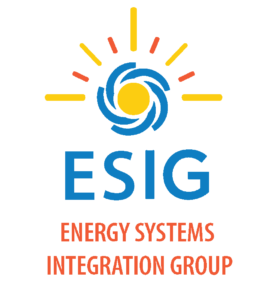During the past several years, China witnessed a very rapid wind power development based on the significant policy incentives pushed by the Chinese government since 2006, when the renewable energy law was enacted. The total wind power installed capacity had reached 129 GW by the end of 2015, ranking wind as the second largest power source following thermal power in China.
The gradually increasing large wind penetration brings many challenges to the Chinese power system, including changes in system dynamic performance. From a few wind turbines tripping off in the beginning of this century in some northeast areas, because of the poor reactive power characteristic of fixed speed wind generators and the weak local grid, to massive outages of wind power plants in the north and northwest areas during power system faults, the impact of wind integration on the grid is spreading to a system-wide range, which can cause large risks of cascading failures and system instability.
The number of such severe outages reached a new record of 193 in 2011. These outages significantly affected the security and stability of the power grid. Most of the outages also led to conditions of grid voltage and frequency outside of the normal range of operation. A critical reason for the large scale outages was that most of the wind turbines were not equipped with fault ride through (FRT) capability.
To avoid the recurrence of a massive wind outage and secure the reliable operation of the power grid, the State Electricity Regulation Commission (SERC) and National Energy Administration (NEA) promulgated a series of regulations, clearly requiring that grid connected wind farms have low voltage ride through (LVRT) capability. To define the requirements on the LVRT capability, China Electric Power Research Institute (CEPRI) took the lead in revising the Technical Rule for Connecting Wind Farm to Power System (GB/T 19963), by inserting explicit requirements on the LVRT curve, active power recovery, and reactive current injection capability. Specialized remediation work was carried out by State Grid Corporation of China (SGCC) and power generation companies since 2011. Remediation measures included requiring FRT capability of wind turbines, confirming the response of reactive power compensators and verifying protective relay settings.
In 2014, the wind power cluster in Xinjiang, Northwest China experienced several incidents in which a great many wind turbines tripped off due to grid voltage oscillations. The voltage oscillations resulted in both over-voltage and over-current and finally led to widespread wind turbine tripping. The phenomenon is different from the low frequency oscillation of traditional power systems; the oscillation takes place mainly between the wind farm and the dynamic reactive power compensators. Although occurring more frequently under weak power grid conditions, the oscillations can also take place when power output of the wind farm is high or low. Oscillation frequency varies from 1-2 Hz at minimum to dozens of hertz or even higher at maximum.
Also, with the increase of wind power capacity and penetration rate, several sub- and super-synchronous oscillation phenomena have emerged. System level stability investigations need to include the interaction mechanism between wind power and the power grid during faults, as well as the FRT performance with dynamic voltage support capability for large scale wind power clusters. All of these studies will be necessary to address the new grid integration challenges along with the realization of China’s ambitious plans for incorporating large scale wind power.
In order to transmit the huge amount of electric power from west China to the load center area in east China, many UHVDC transmission power corridors have been established by SGCC to link the west part of the grid to the east. The power grid structure change also introduces high risks of system collapse due to the possible big power losses following UHVDC system commutation failure and blocking. In the areas with high wind penetration, an urgent need is emerging for the wind generation to provide system services such as inertia response and primary frequency regulation to help stabilize the grid and avoid a high frequency drop.
Currently, the topics of inertia response, frequency control and damping control by wind generation facilities are of great interest to the wind power industry and grid companies. Many grid studies concerning the new tendency of grid performance changed by high wind penetration are ongoing, with the purpose of addressing possible future grid requirements to ensure grid security.
Yongning CHI
Chief Engineer of Renewable Energy Center
China Electric Power Research Institute
Secretary, IEC SC 8A.

Leave a Reply